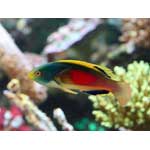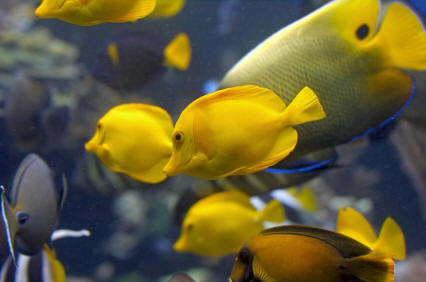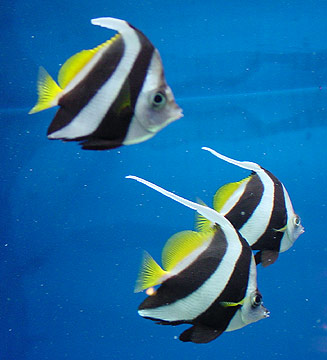Scott's Fairy Wrasse

|
Scientific Name: Cirrhilabrus scottorum Price: Upon Request Origin: Australia, Cook Islands, Fiji, Vanuatu Family: Labridae NOT AVAILABLE NOW |
Technical Info
Temperature: 22 - 26 ℃
pH: 8.1 - 8.4
GH: 8 - 12
SG: 1.020 - 1.025
Max size: 13 cm
Min Tank size: 220 Ltr
Position in Aqua: No special swimming level
Description
The Scott's Fairy Wrasse has a green head shading to dusky blue-green in the middle and brighter blue anteriorly. The lower part of the body is red, the upper half of the body is speckled with black. The ends of the fins can be yellow or pink, the middle of the body is deep purple. This is one of the most popular of the Cirrhilabrus in the aquarium trade. Large males are most frequently available to aquarists due to their extraordinary coloration and tendency to be hardier than some other large fairy wrasse species.
Food
Carnivore-Meaty foods, including finely shredded frozen seafood, mysid shrimp, frozen preparations, pigment-enriched flake food, and Cyclop-eeze. Feed at least twice a day or preferably more often.
Breeding
Scott's Fairy Wrasse is easy to sex as females have much duller coloration than males. Males are also larger and have more elongated fins. The color changes during spawning and become more iridescent. Females are very rare in the trade but it is often possible to order females if you are willing to wait for them. We have no confirmed information about breeding Scott's Fairy Wrasse in aquariums, but most fairy wrasses seem to spawn in harems so it might be good to get several females and one male if you want to try and spawn this species. They are egg layers.
Compatible with
It is reef safe and rather friendly which makes it ideal for a community reef tank. It can be somewhat aggressive toward some species of dottybacks, basslets and longfins. Several females can be kept in the same tank without any problem, but only keep one male unless the aquarium is very large. The male’s color often fades if females are not present.
Note
This wrasse may jump from open aquariums, so make sure to keep your tank covered. Also, be sure to provide this wrasse with plenty of hiding places.

